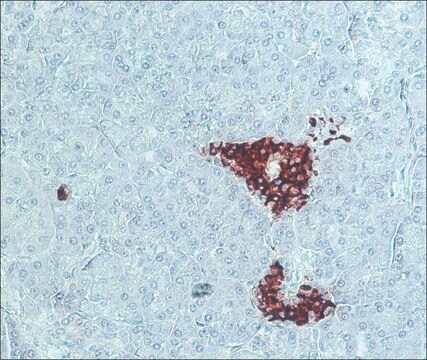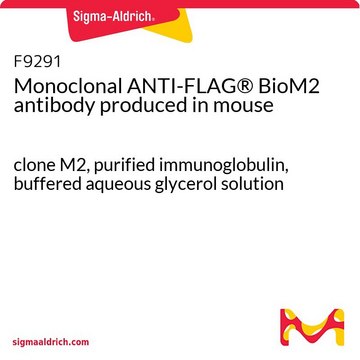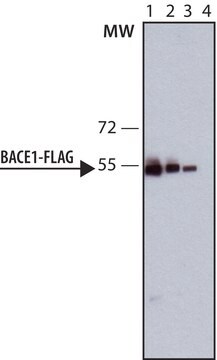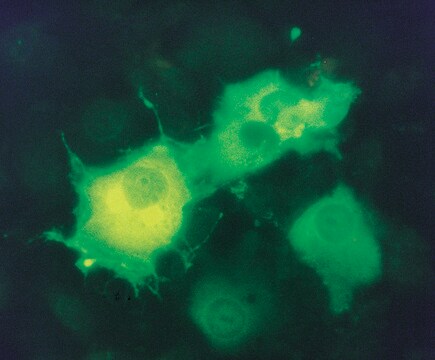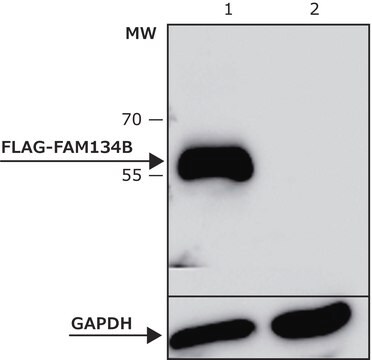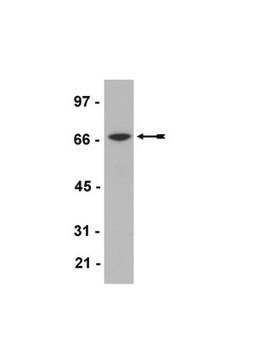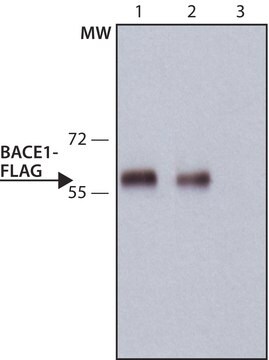Key Documents
A8592
Monoclonal ANTI-FLAG® M2-Peroxidase (HRP) antibody produced in mouse
clone M2, purified immunoglobulin, buffered aqueous glycerol solution
Synonim(y):
Monoclonal ANTI-FLAG® M2 antibody produced in mouse, Anti-ddddk, Anti-dykddddk
About This Item
Polecane produkty
pochodzenie biologiczne
mouse
Poziom jakości
białko sprzężone
peroxidase conjugate
forma przeciwciała
purified immunoglobulin
rodzaj przeciwciała
primary antibodies
klon
M2, monoclonal
Postać
buffered aqueous glycerol solution
reaktywność gatunkowa
all
stężenie
~1 mg/mL
metody
indirect ELISA: 1:20,000
izotyp
IgG1
sekwencja immunogenna
DYKDDDDK
Warunki transportu
wet ice
temp. przechowywania
−20°C
informacje o genach
human ... GPX1(2876)
Szukasz podobnych produktów? Odwiedź Przewodnik dotyczący porównywania produktów
Opis ogólny
Zastosowanie
Suggested dilution for ELISA 1:20,000
Learn more product details in our FLAG® application portal.
Postać fizyczna
Uwaga dotycząca przygotowania
Informacje prawne
Nie możesz znaleźć właściwego produktu?
Wypróbuj nasz Narzędzie selektora produktów.
produkt powiązany
Hasło ostrzegawcze
Danger
Zwroty wskazujące rodzaj zagrożenia
Zwroty wskazujące środki ostrożności
Klasyfikacja zagrożeń
Aquatic Acute 1 - Aquatic Chronic 1 - Eye Dam. 1 - Skin Corr. 1C - Skin Sens. 1
Kod klasy składowania
8A - Combustible corrosive hazardous materials
Klasa zagrożenia wodnego (WGK)
WGK 3
Temperatura zapłonu (°F)
Not applicable
Temperatura zapłonu (°C)
Not applicable
Certyfikaty analizy (CoA)
Poszukaj Certyfikaty analizy (CoA), wpisując numer partii/serii produktów. Numery serii i partii można znaleźć na etykiecie produktu po słowach „seria” lub „partia”.
Masz już ten produkt?
Dokumenty związane z niedawno zakupionymi produktami zostały zamieszczone w Bibliotece dokumentów.
Klienci oglądali również te produkty
Produkty
Structural modifications of proteins are essential to living cells. When aberrantly regulated they are often the basis of disease. Glycans are responsible for much of the structural variation in biologic systems, and their representation on cell surfaces is commonly called the “glycome.”
Nasz zespół naukowców ma doświadczenie we wszystkich obszarach badań, w tym w naukach przyrodniczych, materiałoznawstwie, syntezie chemicznej, chromatografii, analityce i wielu innych dziedzinach.
Skontaktuj się z zespołem ds. pomocy technicznej


